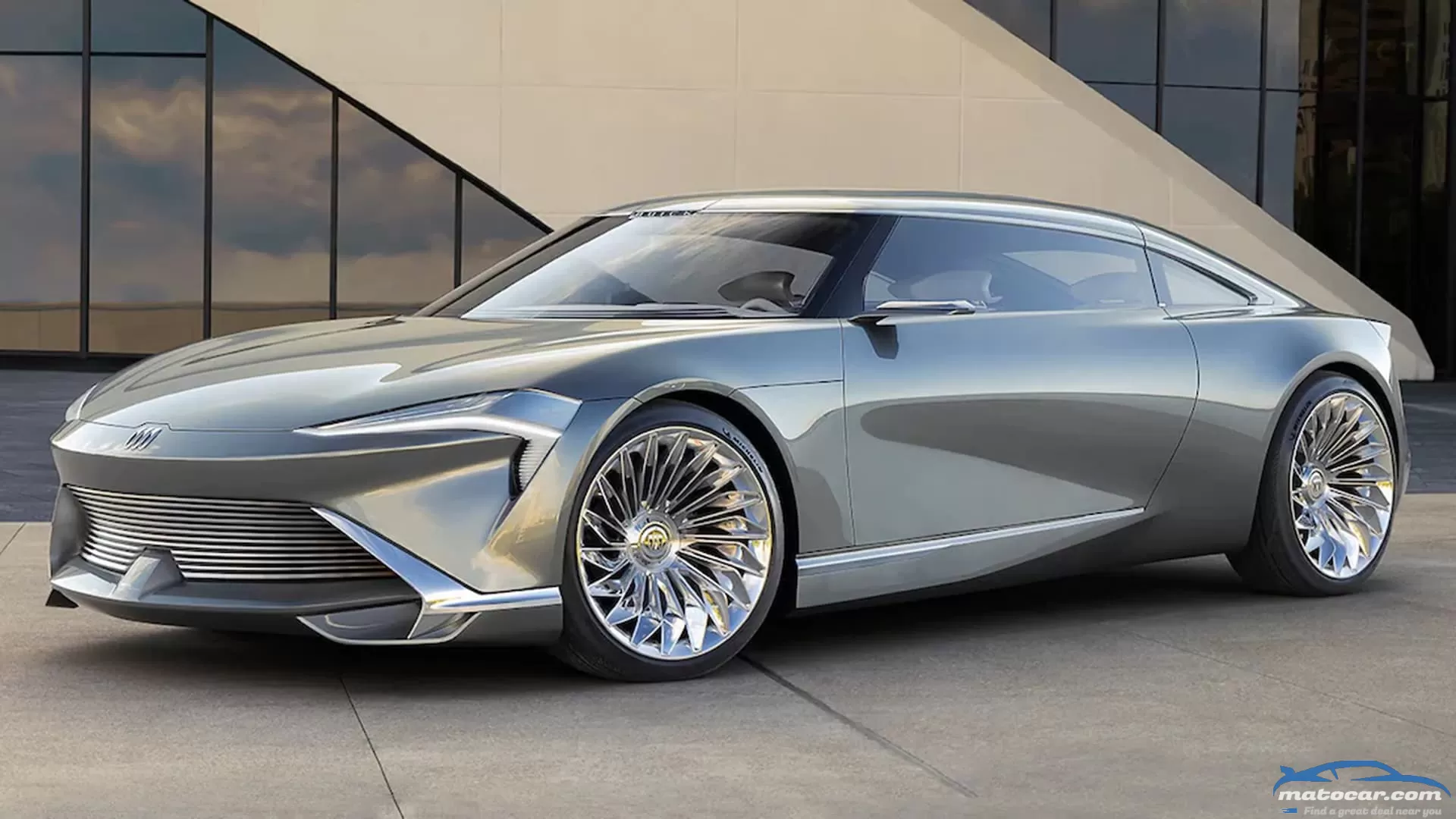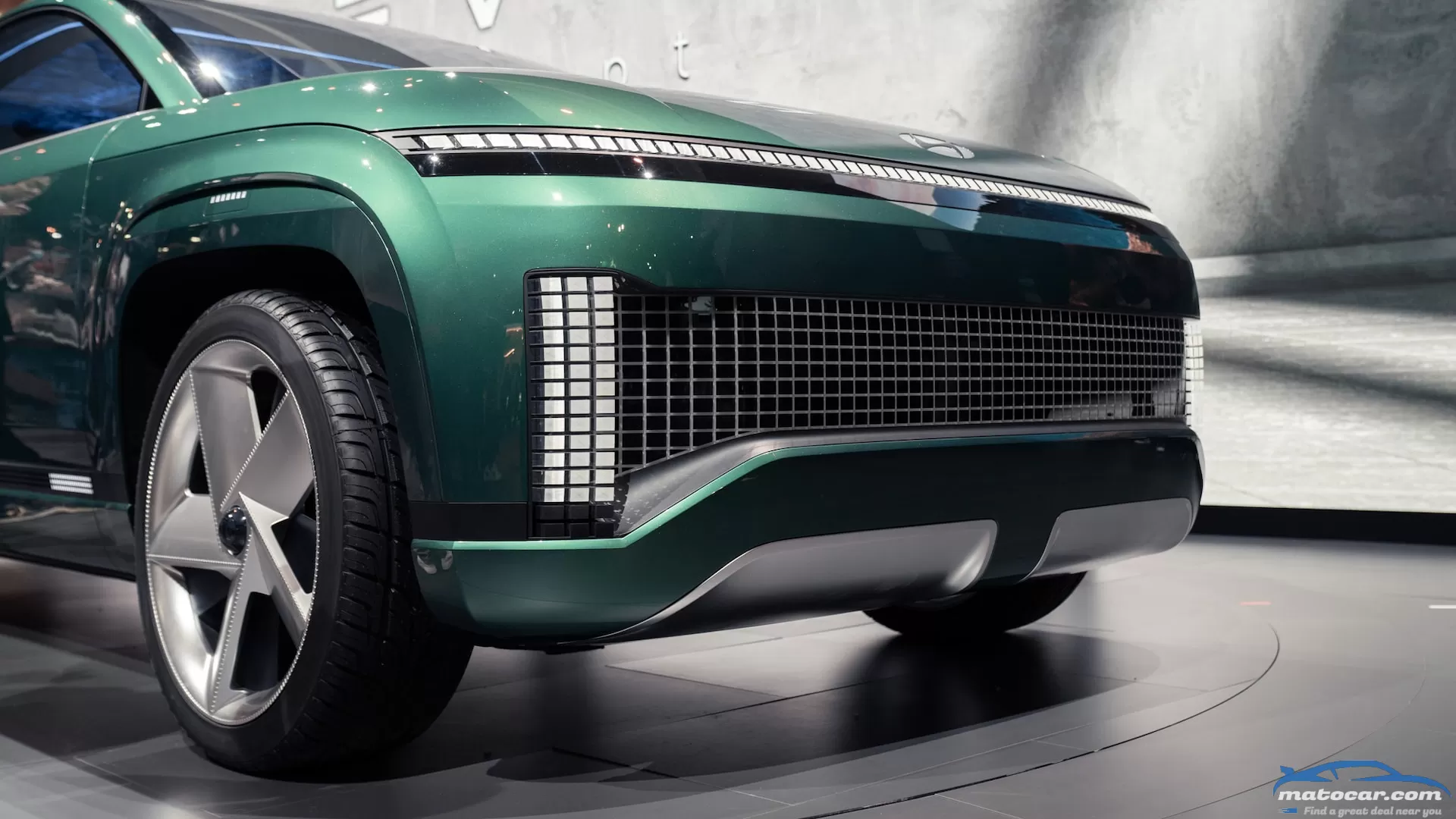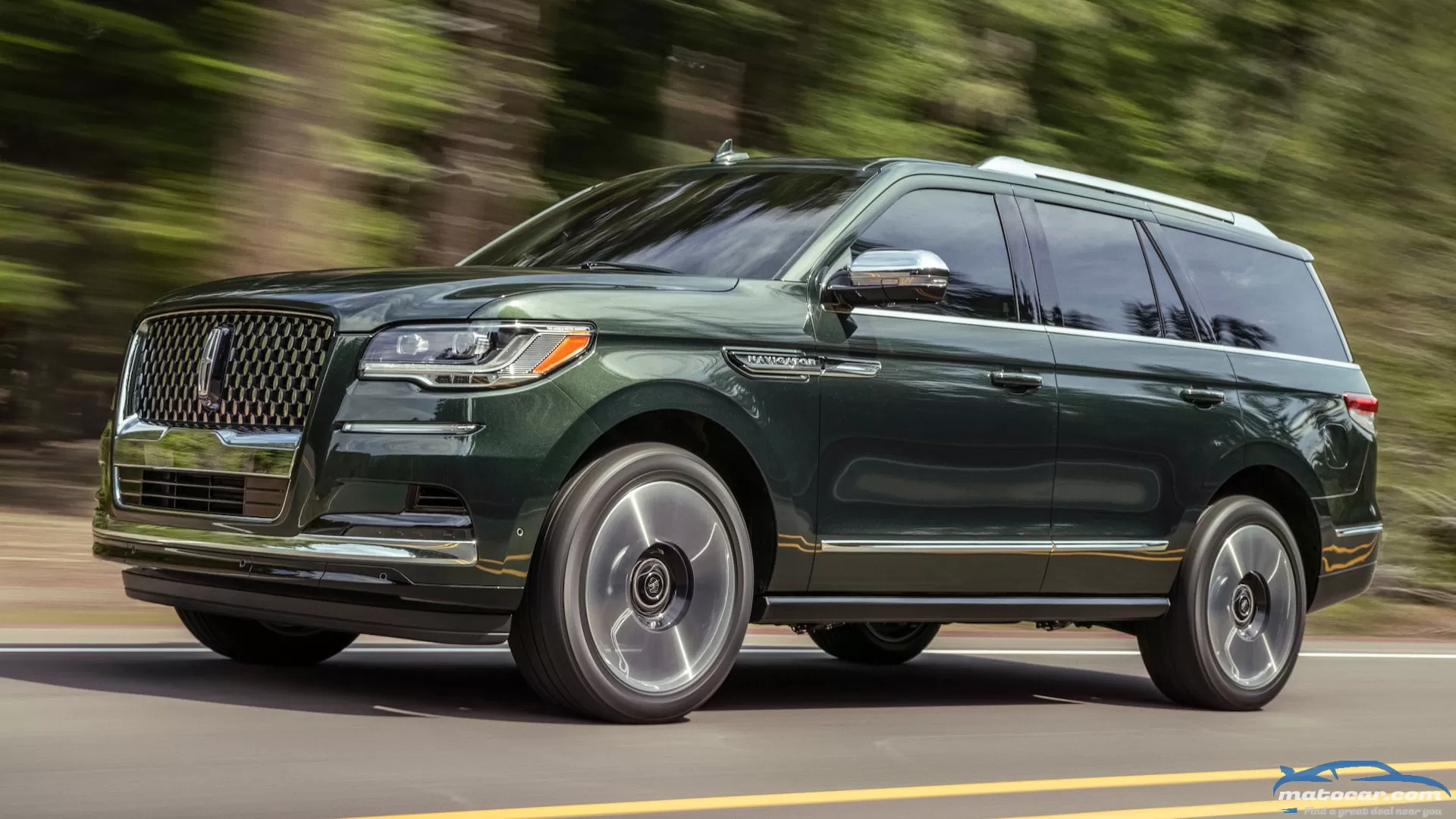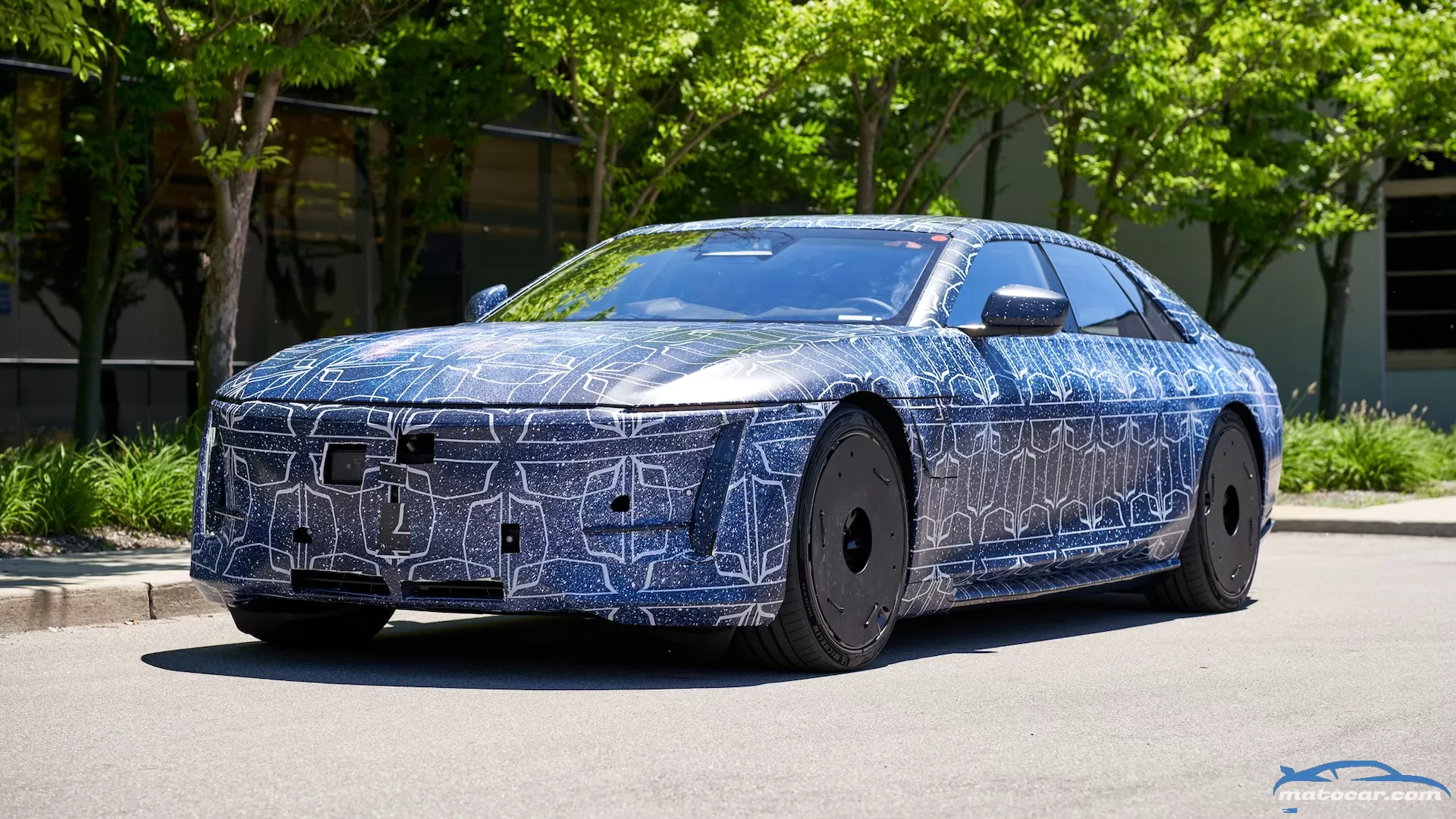Buick Electra EV: Wildcat Coupe Concept Will Inspire Striking New SUVs

WHAT IT IS: The Buick Wildcat EV concept showcases the brand's new face, logo, and design language for a lineup of future electric vehicles. Each will be called Electra, followed by an alphanumeric designation. Although the Wildcat is a coupe, the upcoming Electra models will be all SUVs (at least initially), beginning with a compact offering in 2024. By 2030, Buick's entire lineup will be badged Electra. Two compact two-row models are planned. One is lower, sportier, more car-like, and geared toward couples; the other rides higher with more cargo room for families.
WHY IT MATTERS: GM saved the Buick brand because of its popularity in China, but cool electric SUVs could make it hip in North America and restore some former glory. Besides, the more EVs that share GM's Ultium system of batteries and platforms, the greater the company's ability to reduce costs and keep them more affordable.
PLATFORM AND POWERTRAIN: All these new electric vehicles use GM's BEV3 electric architecture and Ultium battery technology developed with partner LG Chem. The first Electra SUV's powertrain could mimic that of the 2023 Cadillac Lyriq, which launches with a single motor in the rear, good for 340 hp, 325 lb-ft of torque, and about 300 miles of range.
An all-wheel-drive performance variant should follow in 2023. Buick has shown previous concepts with dual electric motors and a 12-module 100-kWh battery, providing 583 hp, a 0-60-mph time of 4.3 seconds, and about 370 miles of range. When the first production Electra SUV arrives in 2024, it will also feature one-pedal driving, on-demand regenerative braking, and GM's Ultra Cruise hands-free driver assist technology. A giant screen will stretch across most of the cockpit.
ESTIMATED PRICE: $55,000
EXPECTED ON-SALE DATE: 2024
You may also like
WHAT IT IS: A three-row all-electric SUV from Hyundai previewed by the Seven concept.WHY IT MATTERS: The Hyundai Ioniq 7 will be the third vehicle in the expanding Ioniq family of electric vehicles. Following the footsteps of the acclaimed Ioniq 5 subcompact crossover and the soon-to-arrive Ioniq 6 sedan, the 7 will borrow the 5's pixelated taillights and daytime running lights. When the 7 concept made its debut at the 2021 Los Angeles Auto Show, Hyundai Motor America CEO José Muñoz promised the production model will hew closely to the show car. "You'll be amazed," he added. Although the Seven concept has a loungelike interior and coach doors, the version that goes on sale will have a normal interior with a steering wheel. We expect its cabin to borrow some of the Ioniq 5's details.PLATFORM AND POWERTRAIN: The Ioniq 7 will be based on Hyundai's Electric-Global Modular Platform (E-GMP), which can accommodate multiple sizes with different battery systems. This is the same architecture used in the Ioniq 5, the Kia EV6, and Genesis GV60, all of which are much smaller. Similarly, the Hyundai Ioniq 7 will share much with the Kia EV9 and Genesis GV90. The Kia is slated to go into production soon and could be here next year, while the Genesis GV90 will most likely arrive in 2024. The Ioniq 6 sedan will also share its platform with these SUVs. Like its smaller sibling, we expect the 7 to have a range north of 300 miles while being able to charge from 10 to 80 percent in about 20 minutes with a 350-kW charger.ESTIMATED PRICE: $50,000EXPECTED ON-SALE DATE: Q1 2024
lincoln navigator Full OverviewThe Lincoln Navigator is well established among ginormous three-row luxury SUVs, having initiated the full-size segment some 25 years ago. The latest iteration of the Navigator made its debut for the 2018 model year and has been refreshed for 2022 with updated styling and some new technology. We usually welcome changes like these, but in the case of the 2022 Navigator at least one addition isn't, er, particularly great.ActiveGuide Is New but Has FlawsLet's dive right into the trouble: The headline technology for the updated Navigator is Lincoln's ActiveGlide semi-autonomous driving technology, effectively an adaptive cruise control and lane centering system that allows drivers to take their hands off the steering wheel on certain pre-mapped roads, the ever-expanding database of which will be beamed to Lincolns through over-the-air updates. (ActiveGlide is effectively a rebadged version of the BlueCruise system used in the parent company's Ford-branded vehicles. Lincoln offers it free for the first three years before owners need to subscribe.)Like all hands-free systems, in order to let you take your hands off the wheel, ActiveGlide needs to be able to detect that you are watching the road. To do this, the Navigator employs cameras atop the steering column that detect head and eye movements. If the system senses that the driver's eyes are off the road, it sounds repeated aural warnings before canceling lane guidance.We are intimately familiar with this sequence of events because we experienced it repeatedly—not because we weren't watching where we were going, but because we forgot to bring sunglasses to the press preview. Turns out that if you squint, ActiveGlide loses track of your eyes and thinks you aren't looking at the road. It also turns out that if a short driver doesn't position the steering column low enough, the steering wheel hub partially blocks the camera, generating more false alarms."Watch the Road"? We Are Watching the Road!We experienced ActiveGlide's full automation on Phoenix's 202 loop freeway and found it worked beautifully—right up until the road curved west into the afternoon sun, when it started shouting warnings to our squinting selves. (Interestingly enough, when the Navigator came to a section where it couldn't steer itself and needed the driver to put hands back on the wheel, the warnings were silent.)Now, we'd normally dismiss this as not such a big deal if it only affected hands-free driving, but there is a major caveat here: The face-recognition camera is also required for the normal lane centering function. So even when we weren't letting the Lincoln do the driving—so, when we were on non-ActiveGlide-mapped roads and turned on cruise control and lane guidance, with our hands firmly on the wheel—the Navigator continued to yell at us to watch the road, even though we were.This annoyance is piled on top of another one: Like most vehicles, when lane centering is engaged, the Navigator sounds a warning if it believes you've taken your hands off the wheel. Instead of a capacitive touch sensor, Lincoln uses the cheaper torque sensor, which detects inputs on the steering wheel. The problem—which we've experienced on other vehicles as well—is that on long straightaways, which require no steering, the Navigator yells at you to put your hands on the wheel even when they are already there. This is the reason why the Cadillac Escalade, equipped with GM's competing Super Cruise system, invested in the pricier touch sensors. Lincoln could do better for its top-of-the-line vehicle—after all, it's not like it's selling these full-sizers at razor-thin profit margins.Were these isolated incidents or due to a malfunctioning vehicle? We don't think so. We drove two different Navigators, and both exhibited the same behavior. Furthermore, other staffers have experienced these issues with the BlueCruise-branded version of the system in Ford vehicles. However, aside from the bedeviled lane-centering system, we found lots to like in the face-lifted Navigator.The Actual Improvements to the 2022 Lincoln NavigatorThere are other changes to the '22 Navigator, and some are genuine improvements, like the styling. The 2022 model has thinner headlights, a bolder grille, and better taillights, i.e., ones that no longer look like they've been installed upside down. There's a new Central Park Edition available with a dark green interior that looks in person better than it sounds on paper, as well as the blue-upholstered Yacht Club version. (Is this a return to the 1970s, when you could get your car's interior done up in colors other than black and beige? Gosh, we hope so.)The newly expanded 13.2-inch center screen, which runs Ford's Sync 4 system, is intuitive and easy to use, and the optional premium sound system is nothing short of spectacular. We also remain fascinated by Lincoln's 30-way power front seats, though we're not convinced they're a great idea. Automakers pay ergonomic experts to craft seats that are supportive and comfortable, with a few simple adjustments so we can tweak them to our needs. Lincoln's 30-way seats make, well, the occupants into the experts. Except most people aren't orthopedic spine physicians, and they will have the same trouble we do molding the seats into a perfect position. Perhaps there is such a thing as too many choices. Lincoln, how about a few ergonomically optimized presets that we can then fine-tune?The Best Seats Are the Rear SeatsWe had a much better time in the back seat (stop giggling, you children). Before our drive, we were chauffeured around in a Navigator equipped with Lincoln's new-for-'22 rear-seat entertainment system, which now incorporates Amazon Fire TV. Two of us streamed two separate programs from Amazon Prime (the system also does Netflix and Disney Plus), all while enjoying the class-exclusive massaging rear seats. (OK, so maybe there isn't such a thing as too many choices.) It was a far more enjoyable experience than being yelled at by the lane-centering system.The 2022 Lincoln Navigator also gets the latest version of Ford's Pro Trailer Assist system, which lets you steer a trailer in reverse via a knob on the dash. Programming is now easier than ever: No separate transponder is needed (as on the Ford F-150), just a checkerboard sticker on the trailer that Ford devotees will recognize from the system's first generation. In addition, no measuring is required to set up the system as with the original sticker-based system. Drive a calibration pattern, and the cameras do all the measuring for you. We're pleased to see this in the Navigator; its ability to tow up to 8,700 pounds—more than half a ton better than the Escalade—is a compelling reason to buy it.Likable, But Still Needs to Be BetterIn all other respects, the 2022 Navigator is basically the gentle giant we've come to know and love enough to make it our top-ranked full-size luxury SUV. It has authoritative power from the 440-hp 3.5-liter twin-turbo V-6, a smooth-shifting 10-speed transmission, and a somewhat noisier, choppier ride than you might expect from Lincoln's flagship. And, of course, the Navigator is woefully inefficient—count on fuel economy numbers in the mid-teens. Lincoln tells us it has no plans to add a hybrid powertrain because gas mileage is not high on the priority list of the Navigator's target buyer.Hopefully said buyer is willing to deal with the driver-assistance foibles, too. Lincoln could dramatically mitigate the Navigator's problem by disabling the face cameras for hands-on lane centering, but it would be better still if the brand invested more in the engineering of the system. ActiveGlide's current functionality is enough to give us major pause, and that's really a shame—among big SUVs, the Lincoln has a lot to offer. Let's hope Lincoln sees the wisdom in investing in a rapid update to this update.Looks good! More details?2022 Lincoln Navigator Specifications BASE PRICE $78,405-$107,720 LAYOUT Front-engine, RWD/4WD, 7-8-pass, 4-door SUV ENGINE 3.5L/440-hp/510-lb-ft twin-turbo direct-injected DOHC 24-valve V-6 TRANSMISSION 10-speed auto CURB WEIGHT 5,700-6,050 lb (mfr) WHEELBASE 122.5-131.6 in L x W x H 210.0-221.9 x 79.9 x 76.1-76.4 in 0-60 MPH 5.9 sec (MT est) EPA FUEL ECON, CITY/HWY/COMB 16-17/22-23/18-19 mpg EPA RANGE, COMB 414-513 miles ON SALE Now Show All
The idea that a concept vehicle is a wild interpretation of a production car is really starting to fade. Especially thanks to the proliferation of electric vehicles, cars like the Cadillac Celestiq look closer to their concepts than ever before. Cadillac revealed that they have begun road testing a pre-production version of Cadillac's very expensive, very boutique EV out in the wild and near the General Motors Technical Center in Warren, Michigan. While it's covered in camouflage and wheel covers, it does reveal a lot about the car itself.The overall shape is a match to what we've seen from the show car version of the 2024 Celestiq and you can even see the "hockey sticks" that are a defining feature of the rear quarter of the car. They are also potentially glowing under the camouflage, but the rear lighting is different on the pre-production car. Instead of the long, vertical brake light bar, we see three round lights on each side of the car, but are oriented vertically.This likely has more to do with the car's pre-production status; automakers often install basic lighting in unusual spots so the cars are road-legal without needing to rely on the production version's lighting designs. Consider it misdirection—these stand-in pieces won't give away the true light shapes.The front treatment definitely lines up with the show car save for the angled trim that flank the vertical headlights. Though, this could be due to the camo or it's a trim piece that will be added during production. You can clearly see the cooling vents located in the lower portion of the bumper as well as where the sensors and cameras are positioned for its ADAS systems.It's really fun to see the station wagon-like Celestiq hatchback come to life as we're currently being downed by SUVs and crossovers in the EV market right now. While it's a high-end production vehicle, hopefully this will bring about a trend of cool looking super-hatchbacks for the market—a rarity at the Celestiq's targeted $300,000 ultra-luxury vehicle market.




0 Comments